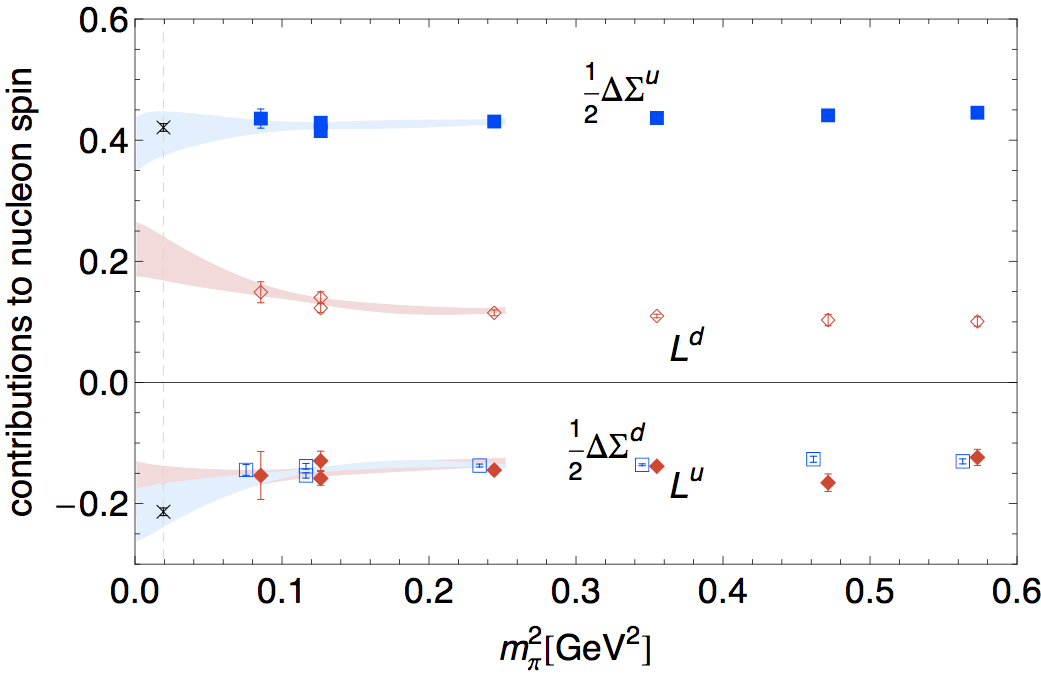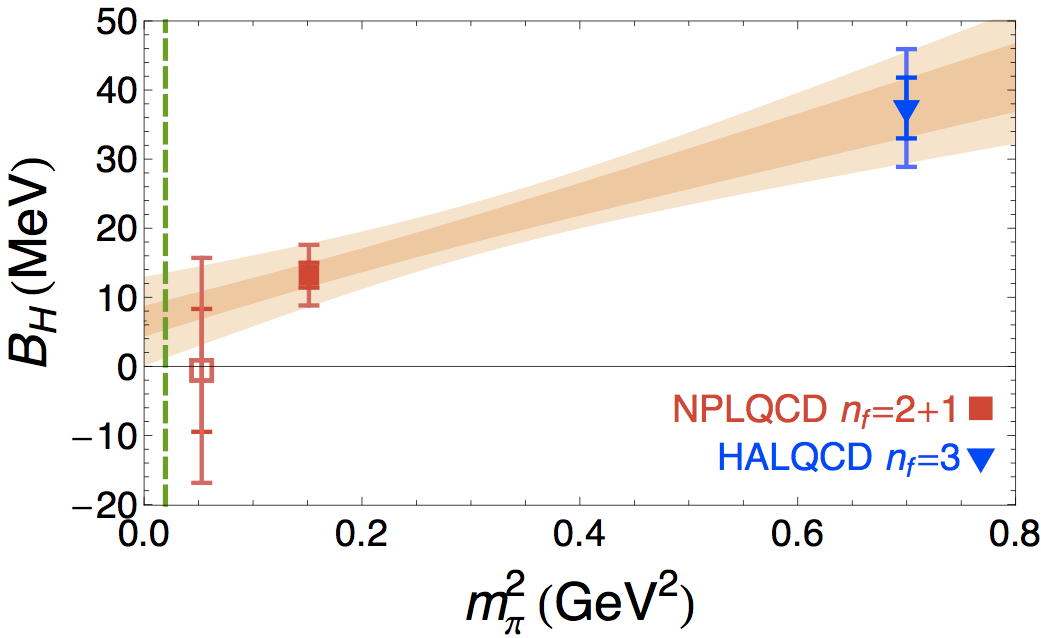|
The structure of hadrons such as protons and neutrons, their
excitations, and the interactions between them are all essential
manifestations of strong-interaction physics. Lattice QCD
calculations are key to providing an ab initio understanding of these
phenomena, and to revealing possible new physics beyond them.
The calculation of the low-lying spectrum of bound states is a stringent test of high-precision lattice calculations. The experimental investigation of
the excited states of QCD has undergone a resurgence, including the observation
of new states in the Charmonium system at Belle and at BaBar, the
search for the so-called missing baryon resonances of the quark model
using CLAS at JLab@6GeV, and the flagship search for so-called exotic
mesons at GlueX at the upgraded JLab@12GeV. Calculations by USQCD are
playing a vital role both in describing existing data, and in predicting
the outcomes of future experiments.

Lattice QCD calculations of the meson spectrum suggest the presence of many exotics.
A striking example is the spectrum of meson states, shown in the
figure. The isovector and isoscalar masses are denoted by the grey
and black/green bars respectively in a calculation with quarks having
a pion mass of 396 MeV, with the light/strange quark content of the
isoscalars indicated by the fraction of black/green in the plots.
These results suggest the presence of many exotics in a region
accessible to the future GlueX experiment at JLab.
One of the great challenges posed by QCD is understanding how protons
and neutrons are made from quarks and glue. Thus a
cornerstone of our effort is achieving a quantitative, predictive
understanding of the structure of nucleons and other hadrons using
lattice QCD. Our lattice calculations are directly relevant to
experiments at JLab, RHICspin, SLAC, and FNAL, and will have
significant impact on future experiments at the JLab 12 GeV upgrade
and a planned electron-ion collider.

Contributions of quark spin (blue points)and quark angular momentum (red points)to the spin of the proton, compared with experimental results from HERMES.
The figure at the right shows how our calculations are advancing our knowledge of
the origin of spin in the proton. The blue and the red points show
the contribution of quark spin and quark angular momentum
respectively, for both the u and the d quarks to the spin 1/2 of the
proton, with decreasing pion mass. The bands show the
dependence expected from chiral perturbation theory as the pion mass approaches its
physical value. The spins carried by the up and down quarks agree
with the black crosses denoting the experimental HERMES results.
The strong interactions between baryons, such as the proton and
neutron, are key to our existence. Together with the
electroweak interactions, they conspire to produce the spectrum of
nuclei and the complicated chains of nuclear reactions that allow for
the production of the elements forming the periodic table at the
earliest times of our universe and in the stellar environments that
follow. Decades of experimental
effort have provided a precise set of measurements of the
nucleon-nucleon scattering cross sections over a wide range of
energies, which have given rise to the modern theory of nuclear forces. Lattice
QCD calculations are needed to determine three-body interactions and to complete the connection between nuclear physics, and the
underlying theory of the strong interactions.

The mass of the H dibaryon compared with the mass of two Lambdas, showing the H as a weakly bound or near-threshold resonance.
An example of recent progress at understanding the
interactions between baryons is that of the Hi-dibaryon, a theoretically predicted two-baryon
bound state with two strange quarks. We calculated the mass of the
H-dibaryon, and compared its mass with that of two free Lambda
baryons, each composed of one up, one down and one strange quark. The
red points show our calculation, performed by the NPLQCD
collaboration, while the blue points show one by the HALQCD
collaboration; the band shows possible forms of the pion mass
dependence, and suggests a weakly bound or near-threshold resonance at
the physical pion mass.
Precise measurements of properties of known particles provide a means
of searching for particles and interactions beyond those of the Standard
Model of the strong and electroweak interactions. An example is the
investigation of nuclear parity violation.
|

